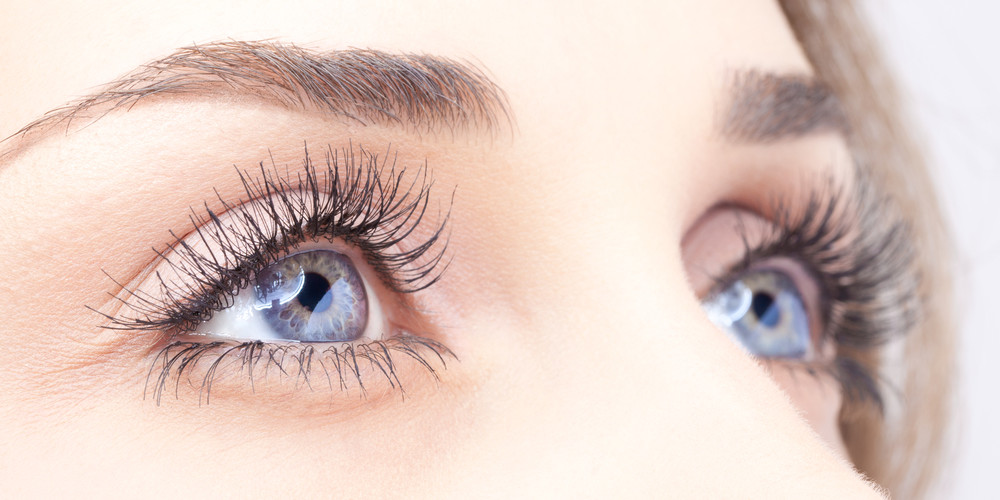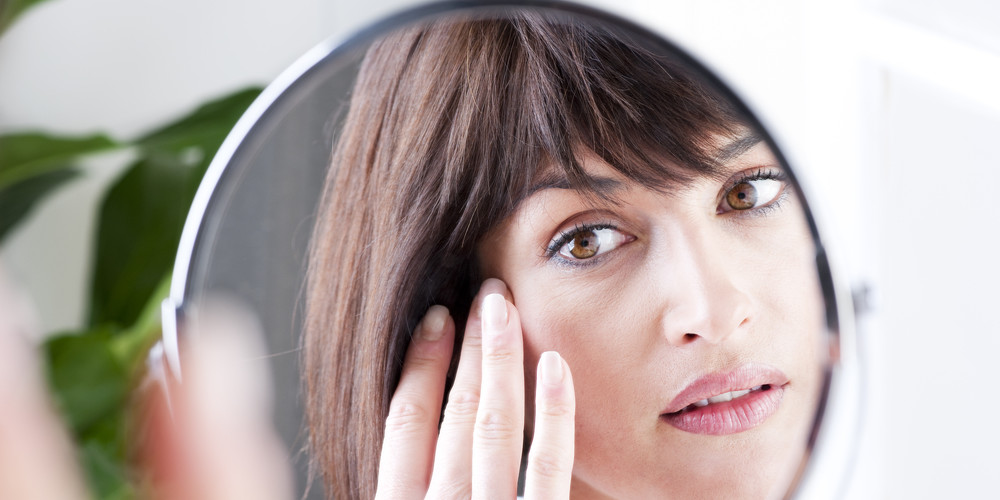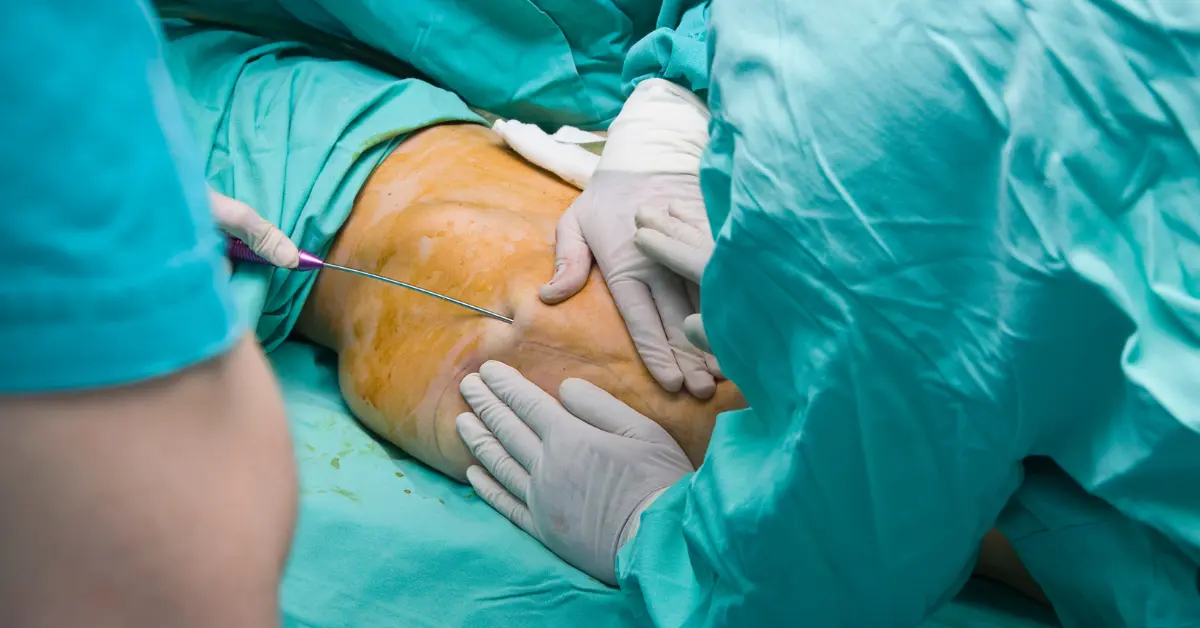A brow lift surgically rejuvenates the upper third of the face by smoothing out wrinkles and frown lines across the forehead and between the eyes. This guide provides answers to all the most frequently asked questions on this time-honored cosmetic procedure.
Updated, September 2017
What Is a Brow Lift?
A smooth and relaxed forehead is synonymous with a youthful appearance. Unfortunately, for many individuals, the forehead is the first part of the face to betray signs of aging. Frown lines and deep furrows across the brow may begin to appear in your early thirties, as the ravages of the sun, gravity and stress cause the skin to lose elasticity and crease.
For some individuals, it is common for the brow to succumb to gravity and assume a flat or horizontal position. For others, prominent forehead wrinkles may result from overactive facial muscles or the cumulative effect of years of squinting or frowning. The result is a tired appearance that does not improve, no matter how much restorative sleep or relaxation you get.
A brow lift, also referred to as a forehead lift, surgically rejuvenates the skin in the upper third of your face by repositioning the underlying muscle and trimming away excess tissue.
The procedure results in a more pronounced eyebrow arch and smoother skin. Many patients also notice that they appear more alert, approachable and relaxed.
Brow lifts are on the rise, with approximately 33,700 women and men across the United States having undergone the procedure in 2016. Some individuals also choose to carry out brow lift surgery in conjunction with blepharoplasty (eyelid lift) for optimal results.

RELATED: Zwivel’s Complete Guide to Eyelid Surgery
The Benefits of a Brow Lift
While Botox and dermal fillers offer an excellent method of targeting forehead wrinkles before they become pervasive and deeply etched in the skin, their efficacy is limited if your forehead is already very creased or the skin is loose.
Brow lifts represent a more invasive surgical method that can dramatically tighten the forehead by repositioning the tissue and muscle, particularly the sagging skin that sits heavily across the brow ridge.
Brow lift surgery is a time-honored technique that offers an array of benefits:
- Raises the eyebrows to a higher position, instantly making you appear more alert, happy and youthful
- Repositions and tightens the skin that sits over the brow
- Elevates drooping upper eyelids
- Smoothes out the creases between your eyebrows
- Tightens the forehead skin, eliminating deep wrinkles and frown lines
- Alleviates tension in the forehead muscles
- Results last up to 10 years or more after only one treatment
Are You a Good Candidate for a Brow Lift?
Most patients who undergo a brow lift are in their late 30s to early 60s, although in some cases younger adults may also benefit from a brow lift if excess fat or skin along the brow ridge is hereditary.
If your situation can be described as follows, you might be a suitable candidate for brow lift surgery:
- The skin above the upper eyelids is heavy and droops
- You have deep horizontal lines across your forehead
- You have vertical furrows between your eyebrows
- You constantly appear tired, angry or stressed
- Your eyebrows appear flat or horizontal because of the sagging skin bearing down on them
- The outer edge of your eyebrow sags, resulting in a permanently sad facial expression
- You are in a good state of physical and mental health
- You are a non-smoker
- You have a thorough understanding of the procedure and realistic expectations with regards to its outcome
You can also carry out this simple test to determine if a brow lift might be appropriate for you: stand in front of a mirror and gently lift the skin above the brow into an appealing position. If most of the excess skin bearing down on the upper eyelid is eliminated, a brow lift might be worth considering.

RELATED: Non-Surgical Brow Lift Techniques — Turn that Frown Upside Down
Finding a Surgeon
Finding a board-certified surgeon to assess if a brow lift is the right procedure for you represents the first step on your journey.
A surgeon experienced in blepharoplasty and brow lift surgery will be able to provide you with carefully considered advice about the best method to meet your objectives. Specialized surgeons can examine your facial morphology and skin elasticity to determine if a brow lift procedure alone will suffice, or if results would be enhanced by including an eyelid lift as well.
Dr. Jonathan Zelken, a plastic surgeon based in Newport Beach, California, emphasizes the importance of performing the right procedure or right combination of procedures.
“There is an important balance between the eyes and the brows,” says Zelken. “A brow lift raises the brows, and may or may not retract the eyelid skin. On the other hand, blepharoplasty does not address the brow. However, if you have overhanging upper eyelid skin, and your brow compensates by always being raised to help you see, after a blepharoplasty you may notice a compensatory drooping of the brow. Please choose a surgeon who understands this important relationship!”
The best surgeons to perform this procedure answer the following requirements:
- Certification from the American Board of Plastic Surgery: The ABPS is the foremost plastic surgery board in the United States. To qualify for membership, doctors must have undergone extensive training in surgery, patient safety, ethics and carry out regular and ongoing medical education to achieve this prestigious status.
- Accredited medical facilities: Your surgeon may perform your brow lift in an office-based surgical center, an outpatient or ambulatory surgical center or a private hospital. Regardless of where it’s carried out, the facility must meet high safety standards. Ask if the facility has JCAHO, AAAHC or AAAASF status. Clinics that meet these accreditation standards guarantee high quality care and safety measures in the unlikely event of a medical emergency.
- Extensive experience in facial plastic surgery: Ask to see before and after pictures of previous clients so you can get an idea of their work. Different surgeons have their own perspectives on what they consider to be a ‘natural look’ and you may wish to gain an idea of how you’ll look once the surgery is completed. Be careful to check for over-elevated brows: these can result in a permanently surprised facial expression and can be hard to correct.
- Outstanding bedside manner: Feeling at ease with your surgeon and free to ask questions or voice concerns is incredibly important. The surgeon should spend time with you and offer you an honest assessment of how the procedure will affect you and to discover whether or not you may be prone to any risks or complications as a result of surgery. It is the surgeon’s job to help you develop realistic (but still positive) expectations about the procedure.
You may also wish to ask potential surgeons the following questions; the answers you’re given may help to influence your decision. These questions can also form the basis of your initial consultation with the surgeon you ultimately select.
- What kind of facility will the procedure be performed in?
- Am I a good candidate for a brow lift or would another procedure or combination of procedures be more appropriate for me?
- What type of technique would you use to carry out the brow lift?
- What are the risks or complications related to the technique?
- What options are available if I am unsatisfied with the final result, and what is my financial obligation if any additional or revision surgery is required?
- Are the results I am seeking reasonable and realistic?
- What kind of anesthesia would be appropriate for me?
- How long do you estimate my recovery period to be?
- What would be the total cost of my brow lift?
Surgeons Fees and Related Expenses
According the American Society for Aesthetic Plastic Surgery (ASAPS), in 2016 the surgeon’s fees for a brow lift cost on average $3,411. However, the cost for anesthesia, medication and pre- and postoperative consultations can increase the total by several thousand dollars.
There are other factors that may also influence the final cost of your brow lift.
- The location of your chosen surgeon: in general, surgeons in large cities have higher overheads and therefore charge more.
- The reputation of your surgeon: those with an impeccable surgical background and extensive experience may charge more than those without.
- The extent of work you require and the technique used to address your specific concerns.
Ask your surgeon for a comprehensive quote before you commit to surgery so you are clear on how much the procedure will cost in its entirety. If you have budgetary constraints, speak to your surgeon or a staff member at the clinic about the possibility of financing plans.
Preparing for Surgery
Prior to your brow lift, your surgeon may request that you get undergo medical tests to identify any chronic conditions or illnesses that could affect your ability to heal or undergo anesthesia.
You will also be asked to cease taking certain medications (such as aspirin) or herbal supplements (such as St. John’s Wort), as they have anticoagulating properties. If you smoke, it will be suggested that you quit at least four weeks in advance.
Depending on the anesthetic used, you may be asked to begin fasting on the night before surgery. You will also be told to wear comfortable clothes on the day of your surgery, with absolutely no jewelry or piercings. Patients are also required to be clean, with no makeup, lotions, deodorants or creams. Avoid nail polish, as it can interfere with the readings of the pulse oximeter which measures your oxygen saturation during surgery.
Finally, make sure you have a friend or family member available to drive you to and from your appointment.
Brow Lift Techniques
There are four main techniques used for brow lift surgery: the endoscopic brow lift, the temporal or limited incision brow lift, the classic or coronal brow lift and the trichophytic lift.
Your plastic surgeon will decide which technique is best suited to your facial anatomy and the extent of corrections required to meet your goals.
Endoscopic Brow Lift
The endoscopic lift has become the technique of choice for many surgeons. It is less invasive than the other methods but can achieve an equally successful result with a much faster recovery time. During an endoscopic brow lift the surgeon makes a series of very small incisions (each approximately ¾-inch in length) behind the hairline, where they are easily concealed by the hair.
- With the aid of a small camera and delicate surgical instruments, the muscles are repositioned and the facial tissue lifted.
- The repositioned skin is then anchored into place.
- Excess fat and skin is removed as required.
- The incisions are then sealed with removable or absorbable sutures, skin adhesives, surgical tapes or clips.
Although an endoscopic brow lift promises less side effects, there are complications that can still arise: for example, itchiness of the scalp and numbness at the incision site. In addition, the anchors that hold the elevated forehead skin in place can last for several years but will be affected by the aging process and drop over time.
Temporal or Limited Incision Brow Lift
The temporal brow lift involves slightly longer incisions than the endoscopic brow lift.
- One-inch incisions are made above each temple behind the hairline.
- The surgeon accesses the brow through these incisions, lifting and repositioning the tissue around the outer brow area.
- Eyelid surgery or blepharoplasty is commonly carried out in conjunction with the temporal brow lift, and the incisions made for the upper eyelid lift can also be used to smooth the lines between the eyebrows.
- The incisions are sutured.
The temporal brow lift is a quick and effective procedure for patients who wish to target the skin at the side of their eyes and who want to appear more refreshed and alert. However, because of its specificity, it is limited in its reach and may not be able to improve deep frown lines or heavy skin above the brow. If the skin is over-tightened, it may also create an “exotic” look in some patients.
Classic or Coronal Brow Lift
The coronal brow lift is the most traditional of the three techniques. Although not as widely used as it once was, it is still favored by some surgeons for its capacity to deliver the most extensive results to the entire forehead.
- One single long incision running from ear to ear behind the hairline is made. This incision allows the surgeon to access all aspects of the brow and forehead.
- The surgeon will elevate and reposition the skin and brow muscles.
- Any excess skin, fat and tissue is trimmed.
- The incision is sutured.
Dr. Francis Palmer, a Beverly Hills plastic surgeon, explains that he prefers the coronal brow lift because of its longevity. “The Coronal Brow Lift remains the ‘gold standard’ for lifting the eyebrows as, unlike the endoscopic technique, it does not rely on suspension to hold up the eyebrows. Fixation methods can and do fail, which will result in one or both eyebrows drooping.”
However, the coronal brow lift can also cause complications: it has been linked to rare cases of numbness at the incision site on the scalp, hair loss and a potentially longer recovery period. There is also an increased risk of scarring when compared to the other techniques.
Trichophytic Lift
This technique of brow lift is especially suited to patients with high foreheads and higher hairlines. It is a modified version of the coronal brow lift but with a shorter incision (approximately 4-cm long).
- The incision is discreetly made at the junction of the hairline and forehead and beveled to avoid disturbing the hair follicles.
- Any excess skin forehead skin is removed. This procedure is particularly effective at smoothing deep forehead wrinkles, lifting the eyebrows as well as possibly lowering the hairline.
- The beveled incision is sutured.
However, the trichophytic lift can cause sensory changes to the scalp due to nerve damage. There is also the possibility (although unlikely) of a visible scar on the forehead/hairline where the incision has been made.

RELATED: Migraines? Nerve Decompression Brow Lift Surgery Could Change Your Life
Forehead Lift Recovery
When the surgeon has completed the procedure, the forehead is taped and may be loosely wrapped with a soft bandage to minimize swelling and bruising. In some cases, a drain may also be used to disperse any excess blood or fluid that can collect under the skin. This is usually removed after a day or two.
Bandages and sutures are removed during follow-up appointments. For most patients, bandages are removed one to three days after the procedure. Sutures are removed seven to ten days following surgery. It is important to keep the bandages and incision site dry and clean.
Most patients require around two weeks of recovery before being able to return to work and normal activities. Many surgeons, however, will advise that you avoid strenuous activities or exercise for a further period of time. Your surgeon will provide you with postoperative care instructions to help accelerate the healing process and your recovery.
Symptoms you should expect during recovery:
- Swelling
You will experience a certain level of swelling and bruising of the forehead as you recover. For some patients, swelling and bruising may also extend to the cheek and eye area. Swelling can be minimized by keeping the head elevated and using cold compresses. Any residual swelling or bruising after two weeks can usually be easily camouflaged with makeup.
- Itching
As your incision heals, the wound may feel itchy. Try not to give into every impulse to scratch as it can disturb growing tissue, impede the recovery process and increase the likelihood of infection and scarring. Sometimes using a cool compress on the site can help soothe the itching sensation which, by the way, will diminish with time.
- Numbness
Numbness around the incision site is very common as nerves may be bruised or stretched during surgery. Numbness may persist for several months with tingly or odd sensations likely to occur as function returns. It may take up to a year before the nerves return to normal.
Following your surgeon’s instructions is the key to a successful recovery and the best possible results. If you experience any unusual symptoms or have any concerns, be sure to call your surgeon or a staff member at the clinic.
Risks and Complications
Although the brow lift is safer than other plastic surgery procedures, complications can still occur. It is up to you to determine if the potential benefits of a brow lift outweigh the potential complications.
Disclosing medical history and any other existing conditions to your surgeon can inform them as to the best way to proceed with surgery to meet your unique needs and reduce risk. Your surgeon will also make you aware of specific risks and of how they can be mitigated. Educating yourself on proper pre- and postoperative care is also vital to decreasing the likelihood of complications.
Possible complications linked to brow lift surgery include:
- Permanent or unfavorable scarring
- Bleeding
- Infection
- Risks linked to anesthesia
- Permanent hair loss at the incision site
- Elevated hairline
- Facial nerve injury with loss of sensation, weakness or paralysis
- Facial asymmetry
- Eye irritation or dryness
- Eyelid disorders such as abnormal position of the upper eyelids (eyelid ptosis) or laxness of the lower eyelid
- Persistent pain
- Skin contour irregularities
- Skin discoloration
- Possibility of revision surgery
Results and Satisfaction Rates
It may take several months for any lingering swelling to dissipate and for incision lines to refine and fade before your final results are apparent. Once you have completely healed, however, you can enjoy your revitalized and refreshed appearance: your forehead will be smooth and free of creases and the repositioned eyebrows will help you to appear more alert and appealing.
Brow lift patients extol the benefits of surgery with many stating that they are very happy with their postoperative results: a survey conducted by the American Society for Aesthetic Plastic Surgery reported a 93.6% satisfaction rate among patients. Individuals who have undergone brow lifts often emphasize that the procedure has rejuvenated their entire appearance, with friends and family remarking on how relaxed, happy and rested they look.
A 51-year-old brow lift patient explained that the brow lift not only allowed her to look better but to feel better too:
“I had this heavy feeling in my forehead all the time, and it made me feel so sleepy and tired. Sometimes I would grab my forehead and pull it up, just for a moment’s relief. Then I noticed that I was losing my peripheral vision—my drooping eyebrows were in the way. I went to a facial plastic surgeon and, after a direct brow lift and eyelid tuck, it’s like a big weight has been taken off my head. The surgery was not difficult and now I feel refreshed. It’s a good feeling.”
Brow lifts also have excellent longevity with results lasting up to 10 years with proper maintenance and care. You can also assist in prolonging the results by avoiding excessive exposure to the sun and always wearing sunscreen when applicable. A healthy diet, reduced stress levels and a good skincare regime will also help to preserve your beautiful results.
The Brow Lift in 2017: Latest Techniques Developments
Brow lifts are subject to regular review and revision as surgeons seek to innovate and improve their surgical methods. The evolution of techniques, from coronal brow lifts to endoscopic lifts as the standard procedure, illustrates an increasing trend that favors less invasive surgical methods, more rapid recovery times and more natural results.
The subcutaneous lateral brow lift or ‘Z-lift’, innovated in December 2015, is one of the most recent and exciting variations of the brow lift. It seeks to improve on the endoscopic method by repositioning the medial (middle) eyebrow to a more natural position. In some cases of endoscopic brow lift surgery, there is a tendency for the brow to be relocated too high and sometimes there are issues with the anchors which hold the brow line in its new position.
In the Z lift, a Z-shaped incision is made at the temporal region of the forehead. The brow is lifted to a more natural elevation and securely attached to its new cranial position. The zig zag-shaped scar is hidden in the hairline and usually refines and fades within eight weeks. Ask your surgeon if this new brow lift variation is available to and suitable for you.
Another brow lift breakthrough took place in 2016. Although double eyelid surgery and brow lifts are popular among women of Asian descent, they do not always produce the best results because of the particular facial characteristics of some Asian women: higher eyebrows, wider upper eyelids and more orbital fat. The results for Asian women who have undergone a traditional direct brow lift may be a perpetual expression of surprise.
Surgeons, however, have innovated a new method to successfully carry out brow lifts for Asian patients coined the “supra-brow infra-brow approach.” Using this method, brow sagging, hooding of the upper eyes and crow’s feet can be successfully treated with inconspicuous scarring and very predictable results.

RELATED: What to Expect from Your Forehead Lift
Frequently Asked Questions
At what age is a brow lift usually performed?
The majority of patients choose to undergo a brow lift in their forties or fifties, when a heavy brow and deeper wrinkles become more apparent. However, patients as young as their late twenties may also opt for a brow lift to address hereditary issues such as heavy or sagging skin over the brow line.
What is an endoscopic forehead lift?
An endoscopic brow or forehead lift is a less invasive technique used to lift the brow. A tiny camera, or endoscope, is inserted under the skin to help guide the surgeon as he or she carries out the lift and repositions tissue and muscles. It is an ideal option for those who don’t require a large amount of lift.
How do I know if I need a brow lift, an eye lift or both?
In your first consultation with your surgeon, they will be able to examine your facial anatomy and physiology and advise which option or combination of options will produce the best outcome.
In addition, you can carry out a simple test yourself: in front of a mirror, gently lift the skin above your eyebrow into a pleasing position. If that shifts most of the excess skin in the upper eyelid, a brow lift is likely to be suitable. If not, you may also require eye lift surgery.
How long will it take to see the results of my brow lift?
The results will become apparent as the swelling subsides. Full results are usually visible within several months, although it may take up to six months for the treated area to return to normal and for full sensation to return to the incision site.
Can a brow lift be used to correct asymmetric eyes or eyebrows?
Surgery can be used to balance eye or eyebrow asymmetry in conjunction with Botox injections.
Will scars be visible?
In most brow lift procedures, the incision line is concealed behind the hairline. Depending on the thickness of your hair, scars are usually well concealed and refine and fade over time as they heal.









